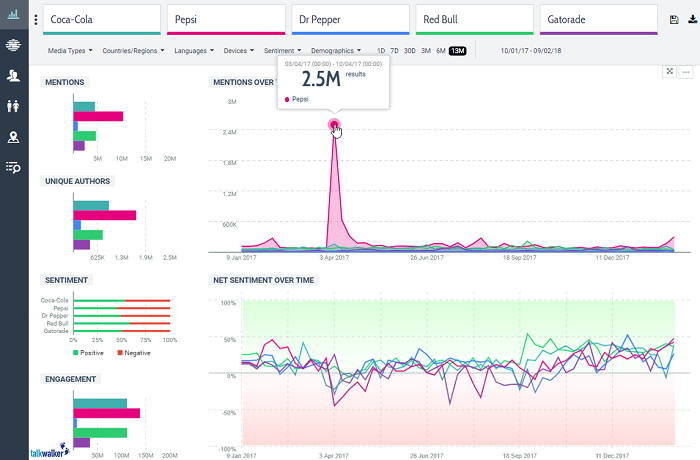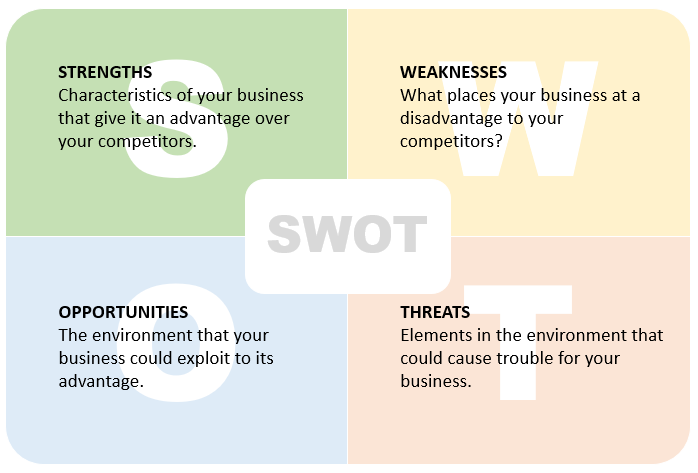
“I coulda had class. I coulda been a contender. I coulda been somebody, instead of a bum…”
If Terry Malloy had done competitive analysis, he wouldn’t have been a bum!
This post is a summary of a competitive analysis guide, I recently published on the Talkwalker blog. It gives you practical advice, templates, tool suggestions, and examples from leading brands. Take a look!
How do you Beat the Competition?
Competitive analysis done well, will bring new opportunities to you business. You’ll find ways to broaden your customer base, strengthen your product, and new areas of the market to target.
What is Competitive Analysis?
After identifying your competitors, you evaluate how they’re working, the strategies they’re following. Then you compare with your business. The results of this comparison will become a crucial part of your marketing strategy. Helping you improve your company’s efforts, take advantage, and take the lead.
Why do a Competitive Analysis?
Because I said so. Because they’re doing it to you. Because they’re doing it to you, they’ll take the advantage.
If you look at their marketing campaigns, websites, products, services, etc., you can find gaps to fill, features you should be developing, markets you should be targeting.
Ask yourself:
- Are they specialising in niche areas, that you’ve not considered?
- Which countries are they targeting? Are there any that you’re ignoring?
- Are their audiences the same as yours? Could you poach?
- Are they developing their products to have features that you’re not offering?
What Should you Analyse?
Content. Imagery. Website. SEO. Social media. Everything.
- Content – What are they publishing, where are they publishing?
- Imagery – House style, clip art, stock photography, video, GIFs?
- SEO – What keywords are their keywords, where are they using – H1, meta, URL, social, etc.?
- Website – Check domain authority, backlink strategy, site navigation, architecture, sitemaps.
- Social media – Which channels, how many followers, tone of voice, frequency of posts, engagement rates?
How to Conduct a Competitive Analysis
Once you’ve established who your competitors are, it’s time to start analysing.
- Products & services – Do they match yours? Are they better or worse? How are they marketing them? What value does they give to consumers?
- Strengths & weaknesses – Look at market share, flexibility, resources, R&D. Do their strengths threaten your brand? Can you exploit their weaknesses?
- Share of voice & sentiment – How much noise are people making about your brand, in relation to the competition? what is the sentiment behind this buzz – neutral, positive, negative?

Using Quick Search, I’ve done a comparison of mentions, sentiment, engagement for Coca-Cola, Pepsi, Dr Pepper, Red Bull, and Gatorade.
If you want to know what caused the huge spike in Pepsi’s mentions, you’ll have to read the competitive analysis guide.
- Audience demographics – Compare audiences. Are there segments that you’re not targeting? Which countries are engaging? Should you be creating campaigns to focus on them?
- SWOT & PEST analysis – Your business, and those of your competitors.

Don’t Be a Bum!
If you want to do comprehensive competitor analysis, it takes time. It’s an ongoing process that has to be performed on a regular basis. Once a day scrolling social media accounts, is not going to work. Once a year when you’re launching a new product, is not going to work.
You have to get your hands dirty, and you have to spy on the competition.
As I said earlier, this post gives you highlights from my competitive analysis guide. The guide includes tools that will help find the data you need, tips on what and how to analyse for valuable insights, real-life examples from leading brands, and a competitor analysis template.
BTW – Find a relevant quote in one of my favourite movies – On the Waterfront – made my day!

